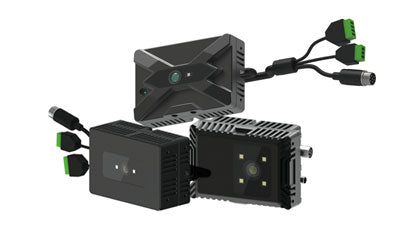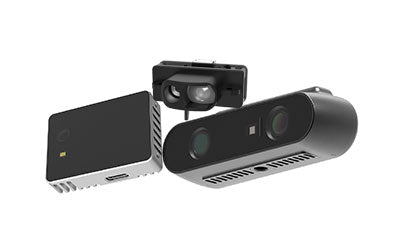TOF in Emergency Rescue & Disaster Management: Positioning & Awareness

How Can TOF Technology Enhance Disaster Response and Emergency Rescue with Precise Positioning and Situational Awareness?
As natural disasters and emergencies become more frequent, disaster response and emergency rescue face unprecedented challenges. Traditional rescue methods often prove inefficient in complex environments—especially under conditions of heavy smoke, darkness, or disrupted communication—making it difficult to quickly locate trapped victims and assess the situation.
TOF (Time-of-Flight) (https://en.wikipedia.org) technology, with its high-precision depth sensing capabilities, introduces an innovative solution for emergency rescue. By enabling accurate positioning and real-time situational awareness, TOF significantly improves response speed and rescue effectiveness.
What Is Disaster Management?
Disaster management refers to a structured set of strategies and measures applied before, during, and after natural disasters (e.g., earthquakes, floods, typhoons), man-made disasters (e.g., fires, chemical leaks), or public emergencies (e.g., pandemics, explosions).
Its core goal is to reduce casualties and property loss while accelerating recovery and reconstruction.
The process typically includes four key stages:
-
Mitigation – Minimizing risks and impacts through city planning, infrastructure reinforcement, and environmental protection.
-
Preparedness – Building early warning systems, conducting drills, stockpiling resources, and educating the public.
-
Response – During a disaster, quickly carrying out search and rescue, medical assistance, evacuation, and emergency coordination.
-
Recovery – Rebuilding infrastructure, restoring order, providing psychological support, and resuming social and economic activities.
In short, disaster management is not only about emergency response but a systematic approach covering prevention, preparedness, action, and recovery.
Current Challenges and Technical Needs in Disaster Response
In earthquakes, fires, floods, and landslides, rescuers often face complex environments, limited information, and severe time pressure. Traditional search tools like visual cameras, sonar, and manual scouting are often insufficient.
1. Search Difficulties in Complex Environments
-
Debris blockage: Collapsed buildings and rubble obstruct entry, while optical cameras fail under occlusion.
-
Crowded or chaotic scenes: Panic and dense gatherings complicate search operations.
-
Low precision: Thermal imaging and sonar struggle in obstructed or multi-layered settings.
2. Low Visibility
-
Fires: Smoke and flames obscure vision and disable optical cameras.
-
Earthquakes/landslides: Dust clouds block sensors.
-
Floods/night rescues: Darkness prevents reliable visual search.
3. Communication Disruption
-
Damaged base stations: Earthquakes/floods destroy telecom infrastructure.
-
Power outages: Communication tools lose functionality.
-
Information silos: Rescuers lack real-time coordination.
4. Urgent Technical Requirements
Future disaster rescue needs technology that provides:
-
Real-time awareness – millisecond-level data acquisition.
-
High precision – accurate detection even in smoke, dust, and debris.
-
Environmental adaptability – works in darkness, dust, and underwater.
-
Independent communication – local mesh networking or satellite backup.
5. The Value of TOF Systems
TOF (Time-of-Flight) emergency rescue systems address these challenges by:
-
Penetrating smoke and dust, offering clear depth-based body detection.
-
3D modeling of rubble, identifying safe access paths.
-
Locating survivors with precision through point cloud data.
-
Integrating AI, detecting life signals or abnormal movement.
-
Supporting independent communications with drones, robots, or satellites.
Thus, TOF provides a real-time, high-precision, and environment-adaptive rescue solution—a crucial pillar for next-generation emergency management.
TOF for Accurate Victim Localization
Quickly and accurately locating trapped victims is the most critical factor in disaster response. Unlike manual observation or infrared imaging, which suffer from visual interference, TOF actively emits light pulses and measures their return time, producing high-precision depth maps that enable intelligent and reliable victim detection.
1. Depth Data for Rapid Search
-
Builds 3D models of collapsed structures, showing accessible routes.
-
Locks victim positions even in cluttered or obstructed environments.
-
Aids path planning, guiding rescuers toward safe access points.
2. Adaptability to Harsh Environments
-
Smoke/dust penetration: Detects body contours even in fire or earthquake debris.
-
Works in darkness: Independent of visible light.
-
Handles material interference: Algorithms filter out reflections from concrete/metal.
3. Dynamic Tracking Capabilities
-
Tracks victim movement in real time.
-
Detects life signs like micro-movements or breathing with AI analysis.
-
Supports dynamic rescue planning, updating as environments change.
4. From Experience-Driven to Data-Driven
Traditional rescues rely heavily on human judgment; TOF shifts this to data-driven operations:
-
Objective decision-making: Every detection is backed by real-time data.
-
Faster searches: Cuts wasted time in blind searching.
-
Lower error rates: Reduces false negatives and missed victims.
In essence, TOF transforms rescue missions from “experience-based” to “data-based,” ensuring faster, safer, and more accurate disaster response.
Situational Awareness and Decision Support
TOF technology not only enables precise localization of trapped victims but also generates high-precision 3D maps of disaster sites, providing powerful data support for emergency command and situational awareness—significantly enhancing rescue efficiency and safety.
-
Real-time 3D Mapping: Depth data from TOF sensors can be used to build real-time 3D point cloud models of disaster zones, clearly displaying collapsed structures, obstacles, voids, and passageways. Rescue teams can quickly identify safe routes, avoid dangerous areas, and plan optimal rescue paths. Combined with continuously updated depth data, rescuers can also track changes in victim locations to ensure timely and accurate actions.
-
Multi-Device Collaborative Sensing: In complex disaster environments, a single device often fails to cover the entire area. TOF systems can work in tandem with drones, ground robots, and handheld TOF scanners to achieve comprehensive, multi-angle situational awareness. Drones can scan wide areas from above, robots can enter narrow or hazardous spaces, and handheld devices allow for detailed inspections—together forming a complete on-site perception network. This collaboration not only improves coverage but also reduces the risks faced by human rescuers entering high-danger zones.
-
Optimized Command and Decision-Making: When combined with AI algorithms, TOF-generated 3D data can support automated hazard identification, feasible path planning, and risk-level assessment. Command centers gain a panoramic view of disaster zones—including obstacle distribution, victim locations, and structural damage—enabling scientific decisions for resource allocation, task prioritization, and route planning. Through digital and visualized decision-making tools, rescue coordinators can act swiftly and accurately, reducing human error and improving overall operational efficiency.
With this high-precision, panoramic situational awareness and intelligent decision support, TOF technology transforms rescue operations from experience-based into data-driven and intelligent execution—dramatically shortening search time, enhancing safety, and ensuring optimal resource allocation.
Case Studies and Results
In multiple real-world emergency operations, TOF technology has demonstrated significant value, especially in complex and hazardous rescue environments where precise positioning and informed command decisions are critical.
-
Earthquake Rubble Search: Earthquakes or structural collapses create dangerous rubble environments filled with unstable debris and confined spaces. TOF sensors can quickly scan rubble zones, generating high-resolution 3D point cloud maps to identify survivor locations and surrounding obstacles. When combined with AI, the system highlights potential survivor zones and prioritizes safe passageways—helping rescue teams shorten search times and significantly improve survival rates.
-
Firefighting and Rescue: Fire scenes are often filled with smoke, high heat, and low visibility—conditions under which traditional cameras and manual searches fail. TOF does not rely on visible light; instead, it uses light pulse return times to generate depth data, effectively locating trapped individuals even in dense smoke or total darkness. Command centers can then use 3D maps to plan safe evacuation routes and guide firefighters directly to victims while avoiding hazardous zones.
-
Improved Rescue Efficiency: In integrated rescue operations utilizing TOF, search efficiency has improved dramatically. Data shows that TOF-assisted missions reduced search times by 35%–50%, accelerated decision-making, and decreased both casualty rates and property losses. With 3D mapping and collaborative multi-device sensing, resource allocation became more scientific and efficient, ensuring every rescue team operated at maximum effectiveness in minimal time.
These cases highlight how TOF-based rescue systems deliver precise localization, real-time situational awareness, and intelligent decision support, offering strong technical guarantees for disaster management and significantly enhancing both effectiveness and safety in emergency response.
Future Trends
With the rapid development of AI, big data, drones, and robotics, the potential of TOF (Time-of-Flight) technology in disaster response and emergency management will expand even further. Beyond improving precision and efficiency, TOF will drive the intelligent and systemic evolution of rescue models.
1. Drone + TOF Smart Rescue
Future disaster sites will overcome the limitations of traditional manual searches through integrated aerial-ground collaboration:
-
Wide-Area Rapid Scanning: TOF-equipped drones can scan vast disaster zones in just minutes.
-
Real-Time 3D Map Generation: Provides command centers with detailed structural and victim-distribution data for quick planning.
-
Complex Terrain Coverage: From mountains and valleys to collapsed rubble, drones can deliver data from areas otherwise inaccessible to humans.
2. Robot-Assisted Rescue
Robots will increasingly act as the “advance team” in hazardous, confined, or toxic environments:
-
Enhanced Safety: Robots can replace rescuers in collapsed buildings, narrow mines, or high-risk fire zones.
-
High-Precision Detection: TOF-equipped robots can identify survivors in smoke or darkness, streaming real-time data back to operators.
-
Sustained Operations: Robots can work continuously without fatigue, ensuring uninterrupted monitoring and exploration.
3. AI-Driven Predictive Management
Disaster management will shift from reactive response to proactive prediction and prevention:
-
Risk Forecasting: AI integrates historical disaster data with real-time TOF depth data to predict potential risk points.
-
Optimized Resource Deployment: Automated planning of personnel and equipment allocation enables better preparedness.
-
Dynamic Decision Support: AI continuously refines rescue strategies based on real-time TOF feedback.
4. Multi-Scenario Expansion
TOF applications in emergency rescue extend far beyond a single disaster type:
-
Earthquakes – rubble scanning and survivor detection.
-
Floods – monitoring water levels and locating survivors.
-
Fires – identifying human silhouettes in smoke and heat.
-
Mining Accidents – deep monitoring in narrow, dark environments.
-
Chemical Leaks – remote hazard mapping to safeguard rescuers.
5. Building an Intelligent Emergency Ecosystem
The future of emergency response will be powered by a system integrating TOF sensors, AI decision platforms, drones, and robots:
-
Comprehensive Situational Awareness: A full real-time picture of disaster zones.
-
Accurate Individual Localization: Rapidly identifying survivors to maximize the golden rescue window.
-
Intelligent Decision Chain: From disaster monitoring and risk prediction to real-time rescue execution, enabling integrated management.
In summary, the future development of TOF technology in emergency rescue and disaster management will be driven by automation, intelligence, and multi-scenario adaptability. TOF not only equips rescuers with scientific, efficient, and safe tools, but also serves as a cornerstone for building next-generation smart emergency response systems.
Synexens Industrial Outdoor 4m TOF Sensor Depth 3D Camera Rangefinder_CS40p
After-sales Support:
Our professional technical team specializing in 3D camera ranging is ready to assist you at any time. Whether you encounter any issues with your TOF camera after purchase or need clarification on TOF technology, feel free to contact us anytime. We are committed to providing high-quality technical after-sales service and user experience, ensuring your peace of mind in both shopping and using our products.
-
Publié dans
CS40P






